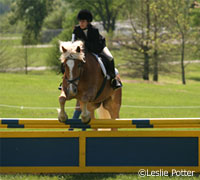 Horse show season is in full swing, and it’s time for me to plan the rest of the competition year. But being entrenched in our family’s horse breeding business, I’m forced to gaze only wistfully this year at premiums for the big rated shows: My sister and I have to finally confront the small herd of greenbroke youngsters we keep shuffling to the back burner. So this season I’ll be a fixture at the schooling shows. Yes, that will be me endlessly trotting over the crossrail in the warm-up arena on yet another gangly warmblood. If I’m lucky and can pawn some of these Goliaths off on my sister, I’ll find time to show my trainer’s gentleman gelding in some amateur classes at an A-rated show.
Horse show season is in full swing, and it’s time for me to plan the rest of the competition year. But being entrenched in our family’s horse breeding business, I’m forced to gaze only wistfully this year at premiums for the big rated shows: My sister and I have to finally confront the small herd of greenbroke youngsters we keep shuffling to the back burner. So this season I’ll be a fixture at the schooling shows. Yes, that will be me endlessly trotting over the crossrail in the warm-up arena on yet another gangly warmblood. If I’m lucky and can pawn some of these Goliaths off on my sister, I’ll find time to show my trainer’s gentleman gelding in some amateur classes at an A-rated show.
Don’t feel sorry for me. I don’t really miss the A-circuit shows anymore. I suppose when I was younger—much younger—and still had that Olympic dream, A-shows were a necessity. I went there to get noticed, to build a reputation. But right now, the A-circuit is not what’s best for my horses and me. And they may not be right for you just now, either. By choosing the most suitable level of competition, you can have fun, improve your young horses and keep your riding skills sharp — without overfacing yourself or burning yourself out.
School Days
If you’re managing a schooling show in the San Diego area and offering an English saddle as a high-point award, you might as well tag it now for one of Karole Caldwell Henry’s students. With yet a third junior rider well on her way to securing another saddle this year, Karole is earning a reputation for turning out riders who, with limited financial backing, are nonetheless fine equitation riders well-versed in showmanship skills.
Because most of her riders are new to showing and must operate on a budget, Karole steers them toward non-rated schooling shows with a history of good management, fair judges and safe courses. And she also prefers schooling shows that are conducted as a series of three or more dates, where riders earn points for each ribbon won. The series champions are then awarded prizes at the end of the season.
“I like my beginning riders to have a goal and a plan to get there,” says Karole. “Competing in a series for a high-point award is a great one. Plus, the atmosphere at these shows is not psychologically intimidating. The warm-up ring isn’t scary, because all of the riders are basically at the same level.”
The schooling shows offer more than just a shot at a glamorous prize for Karole’s students. They’re also a way to gain an education about horsemanship.
“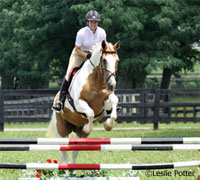 I always want my students to learn safety first, especially when jumping a course of fences. Usually these types of shows offer crossrail classes. I want my students who are starting out to be slow and safe, and at schooling shows the rules are less stringent. Usually trotting in the corners is allowed in the crossrail classes, which is great.”
I always want my students to learn safety first, especially when jumping a course of fences. Usually these types of shows offer crossrail classes. I want my students who are starting out to be slow and safe, and at schooling shows the rules are less stringent. Usually trotting in the corners is allowed in the crossrail classes, which is great.”
Another plus is that non-rated shows offer beginning riders a chance to improve their skills at a price that’s quite affordable, especially compared to the rated shows. Not only are entry fees cheaper, but the horses who bring home the aforementioned championships can be comparatively bargain-priced, too. What counts in a horse at this level of showing is reliability, not classic hunter type or movement. Hence, a suitable horse can usually be purchased in the $2,000 to S4,000 price range.
“I like to find those ‘old campaigners,'” Karole says. “You know the type—an older horse who knows his job, may be semi retired, who doesn’t have much resale value on the open market but has a heart of gold. These horses are very special to us.”
For Pete’s Sake is one such special horse, a venerable gray gelding Karole salvaged after he had been relegated to pasture life. Perhaps in gratitude, the kindly gray packs all comers around the lower courses, and has earned a lifelong home at Karole’s barn.
When horses like Pete have done their job, it’s time for the rider to move on to the larger shows and a more challenging mount. After all, no one likes to compete against a “cherry picker,” an accomplished rider who swoops down for an appearance at a small show just to horde the first-place prizes. Asked when she knows it’s time for a student to advance, Karole says with a grin, “When they’ve won everything. Then it’s time to move up.”
Making that move onward and upward is Amanda Loya, one of Karole’s junior riders. A saddle winner herself, Amanda explains how the non-rated schooling shows served her well.
“Because the classes are pretty inexpensive, I could go in a lot of classes at one show and really practice what I needed to work on. For me, one thing I needed to work on was making my corners better. I learned how to use my corners while jumping a course, and how to set up a horse for a flying lead change.”
Amanda gained this experience aboard the trusty For Pete’s Sake.
“I rode For Pete’s Sake, and he brought me along quickly and taught me a lot. But I outgrew him and needed a challenge. I was able to lease an older warmblood gelding, and I found myself at county shows winning in hunters and medal classes.”
So enthused with her prowess, her parents and Karole went on a mission to find an even higher caliber horse capable of taking Amanda further. Hopefully they’ve found it in Churchill, an impressive bay gelding, who looks the type to carry Amanda to the next step.
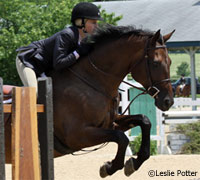 “B”: Best of Both Worlds
“B”: Best of Both Worlds
A step up from non-rated schooling shows is the circuit of locally rated shows, sponsored mostly by county riding associations. Also referred to as the B-circuit, these shows offer divisions for novices as well as hunt seat medal classes for the more experienced riders. Hunter and jumper classes are generally geared toward green horses or junior and adult amateur riders, helping to create an environment where exhibitors are often heard encouraging each other at the back gate. The end of the show season culminates with either a members-only championship show or a banquet hosting the presentation of year-end trophies.
Although once considered merely a training ground for future A-circuit riders, or a limbo land for horses and riders who somehow couldn’t cut it in the big time, the B-shows are increasingly popular as an end unto themselves. Lasting one day or over the weekend, these shows don’t require the commitment of time and money that nationally rated shows demand.
“This is what most of my clients do for fun after working 40 hours a week,” says trainer Susan Smith. From her Cornerstone Equestrian Center in Norco, Calif., Susan consistently produces champion junior and amateur adult riders on the B-circuits.
With a background in the A-shows, Susan is able to explain why the county-rated shows appeal to so many riders. “I’ve got customers who are perfectly capable of competing at the A-level, but they either can’t afford to or they simply don’t want to spend that amount of money on horse shows. Basically that’s what it comes down to: the amount of money they’re willing to spend.”
As the B-shows gain in popularity throughout the country, the price and quality of the horses needed to win at this level rise as well. While the glorified school horse may be acceptable at the schooling shows, chances are he just won’t be sharp enough for the B-shows. The starting price for a serviceably sound horse, with enough mileage to step right into the arena and put in a credible round at the B-level, is about $7,500 to $12,000.
Add the floating movement necessary to win under saddle and the schooling required to be a dependable medal-class mount, and the price escalates to about $25,000. These are just price estimates based on the West Coast market, but they demonstrate how the cost of a horse rises with the level of competition.
“To win at the county or B-shows anymore a hunter needs to be, in general, a Thoroughbred type,” Susan describes. “He needs to be athletic—meaning he jumps in good hunter style—be attractive and a good mover. He must make clean flying lead changes. Plus he must have the length of stride to make the prescribed, set distances on the course comfortably. You know,” she adds, “a hunter shouldn’t have to be racing around at Mach Five in order to make the correct number of strides in a line.”
Knowing how to read and study the posted course for a class requires some practice, and it is one of the lessons Susan strives to teach her riders. Errors that might still have earned a ribbon at a schooling show are simply not tolerated at B-shows.
“Riders have to be more technically correct. If the course is set, for example, with a five-stride line, you must get those five strides. There’s no allowing for adding strides if you want to be in the ribbons.”
One of the adult amateur riders who has blossomed under Susan Smith’s tutelage is Erin Compton. After several years of winning at schooling shows, Erin joined Susan’s barn and decided to move up to the B-shows.
“I’ve always been a competitive person and I wanted to push myself to be even better. I get bored if there’s not a challenge,” Erin explains.
She became a member of the local Orange Count Horse Show Association, and set her sights on qualifying to ride in the club’s annual championship show. It took her awhile to prepare.
“I found it takes more consistent practice to be competitive at the county shows than the schooling shows. Mistakes just don’t go unnoticed,” she sighs. “I had to concentrate on improving my overall look, perfecting the ‘picture’ the judges are looking for.”
She also needed to fine-tune her horse, affectionately named Best Pal (not related to the famous racehorse). Although a good mover and a decent hunter type, Best Pal was a little nonchalant about his flying lead changes. Wisely, Erin had her horse schooled by more educated riders while she focused on perfecting her aids necessary for getting those smooth changes.
Her practice and determination paid off, because at the 1997 championship show Susan coached Erin to first place in the Horsemanship Medal finals, offered for novice adult amateur riders. A college student and new mom (to a human baby, no less!), Erin concedes that the B-circuit is probably as far as her riding career will go. But that’s fine with her. Here the shows are affordable, yet the competition still keeps her refining her skills.
Susan Smith agrees that many riders, particularly the adult amateurs, decide to stick with the B-shows once they’ve experienced what the circuit has to offer. Dare a rider who’s enjoyed success at B-shows return year after year?
“Sure, why not?” Susan replies. Especially if you live in an area that offers multiple county associations within driving distance. “We’re fortunate here in Southern California, because we have several county associations we can compete in: Los Angeles, Orange and San Diego. Each association has its own group of members, so my riders get a chance to compete against different horses and riders. I also have good B-circuit riders who like to start the new show season with a green horse, and that’s a whole new experience.”
On the other hand, if you live in an area with a limited competitive pool and you return year after year to easily win on the same horse, don’t be surprised if you feel a resentful chill coming from your fellow competitors. If you care about getting along, you might choose to show elsewhere or at least find a green mount with which to begin again. But if you care about what other competitors say or how they treat you, the A-circuit might not be for you either, as the intense competition can create rivalries.
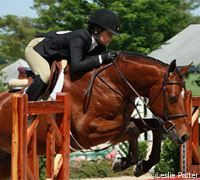 Formal Attire and Fine Horseflesh
Formal Attire and Fine Horseflesh
To give you an idea of how different the A-circuit can be, here’s a bit of not-so-veiled advice I received from the mother of one of my A-circuit horse show buddies: “If you can’t afford to go first class then you shouldn’t go at all.” I was a naive teenager and the admonishment stung like a riding crop. At the Del Mar National my horse was assigned the last stall in my trainer’s aisle, relegated to the far end where my tack trunk that (gasp!) didn’t bear the barn’s logo wouldn’t detract from the elegant ambiance of the shedrow. Yet I had to snicker, because each time I won a ribbon — usually beating the stars of the barn, I might add — my prizes were grandly displayed outside the tackroom right along with everyone else’s.
I don’t grumble about it anymore. It’s just the way things are.
No doubt about it, the A-shows boast the cream of the current crop of competing horseflesh. There are no mediocre movers in the under-saddle classes and no hunters with uneven knees over a fence. If I had a dollar for every gorgeous bay gelding in the amateur hunter division, why, I’d be able to buy that new tack trunk!
The A-circuit is where the money flows like water — bottled designer water, thank you. A solid junior or amateur hunter can easily cost $50,000 to (hold onto your hunt caps) $100,000.
Besides the cost of the horse, the A-circuit also requires a great investment of time and effort. Because competition is so tough, there’s no sliding by with just one riding lesson a week. Any cracks in a rider’s foundation become glaringly apparent during the pressure of the multi-day A-shows.
Then there are the associated travel costs of attending an A-show. Because these are multi-day shows, junior riders must skip school and adults be freed from careers and domestic responsibilities Besides paying for meals eaten away from home and hotel bills, it is also customary for exhibitors to share the cost of their trainer’s meals and lodging during the show. This can be a substantial investment, especially if the trainer is accompanied by an entourage of barn managers, assistants and grooms.
Yet there is an unmistakable lure. For hotshot junior riders there are the medal finals to qualify for, in particular the USEF, the Maclay and the USET. Take a look at America’s roster of leading show jumping riders and it reads like a Who’s Who of former medal final contestants. For amateur adult riders the A-circuit can offer a heady social atmosphere and the opportunity to compete against some of your former rivals, now adults themselves, without worrying about which one of you will attract the attention of some USET scout. Another attraction is the chance to win more than just a ribbon. Most of the divisions divide a cash purse among the prize winners and offer lucrative “classics” or sweepstakes. A consistent hunter or jumper can earn enough money to help offset show costs.
Finally, there is the unmistakable air of pageantry that surrounds an A-show: Striped awnings provide shade for a catered exhibitors’ party; a cluster of bays and chestnuts, coats glistening, stand ready at the back gate with their attendants; the nattily attired ring steward presents each ribbon with a flourish of importance.
But whether you’re polishing off a textbook-perfect round at an A-show, enjoying the relaxed camaraderie of the county show or vying for points at a schooling show in hopes of winning a saddle, remember to give your horse a nice pat on the neck as you leave the ring. After all, regardless of which level best suits you and your horse, the incomparable partnership between horse and rider is really what’s important, isn’t it?
Further Reading
Horse Show Survival
Horse Show Dos and Don’ts

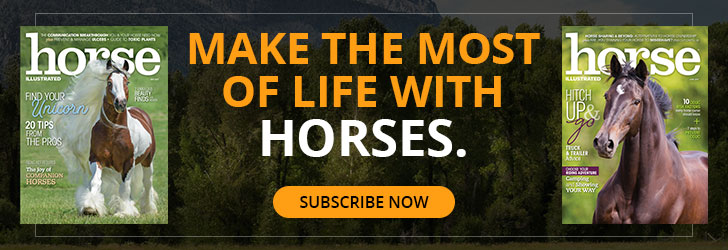
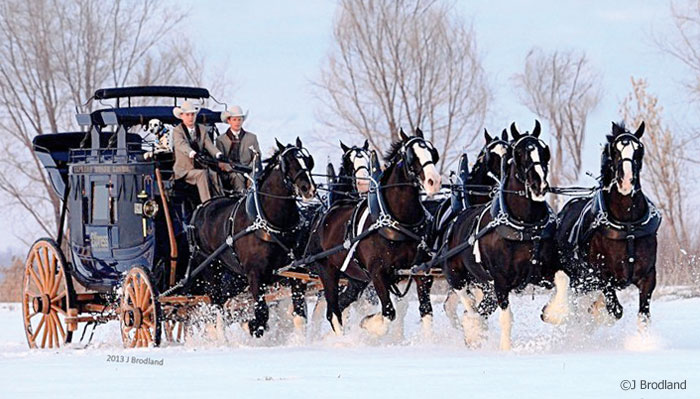
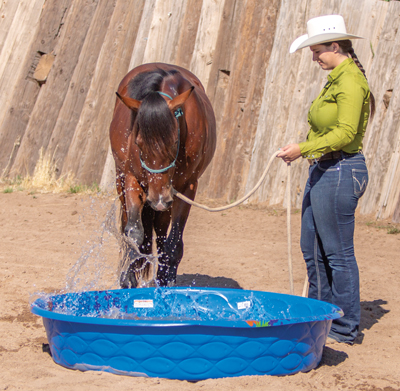
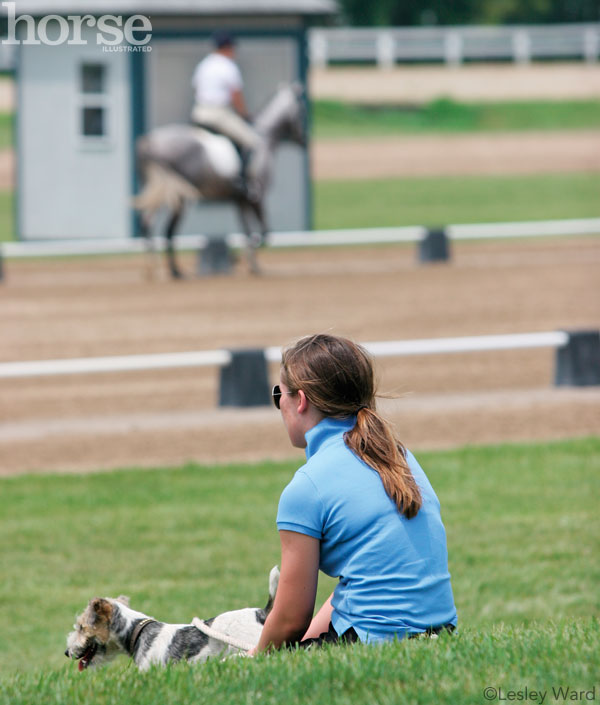

I suggest that you proof read this article… a lot. There are a lot of grammatical mistakes, spelling errors, and formating errors.
i really like this article. it helped me understand the differences of the different show circuits
Thanks for a great article. I learned quite a bit from it.
This article was interesting & informative.
Great read! Thanks for shedding the light.